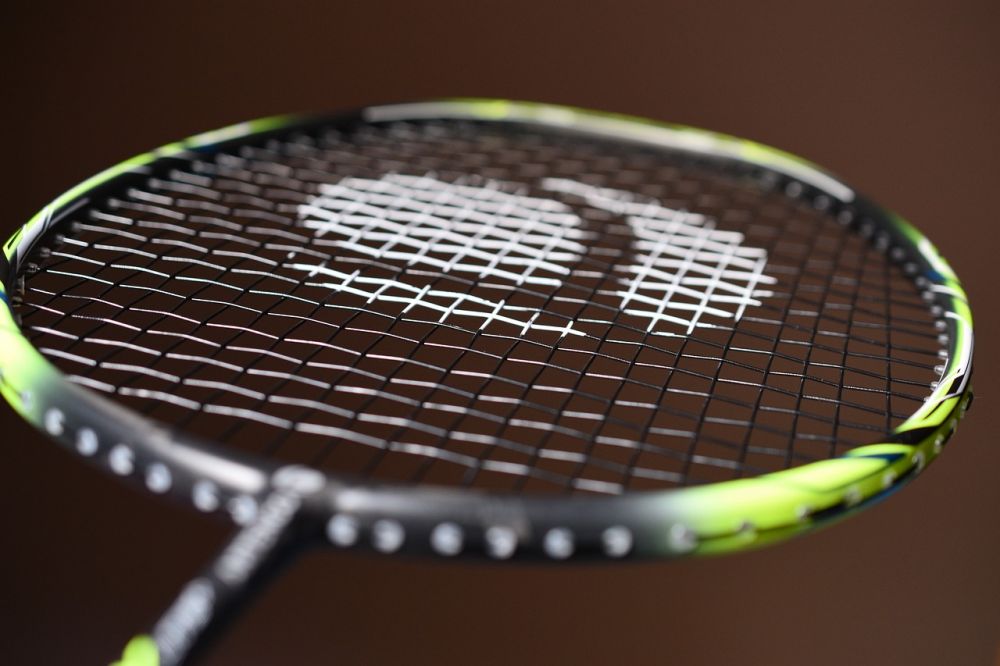Badminton Racket: A Comprehensive Guide to Types, Measurements, and Historical Analysis

Introduction
Badminton is a popular racket sport played worldwide, known for its fast-paced action and agility. The badminton racket is a vital tool in this sport, enabling players to hit the shuttlecock with precision and power. In this article, we will provide a thorough overview of the badminton racket, covering its various types, measurements, and historical significance.
What is a Badminton Racket?

A badminton racket is a lightweight sports equipment specifically designed for playing badminton. It typically consists of a frame, strings, and a grip. The frame can be made of various materials such as carbon fiber, aluminum, or steel, each offering its own unique characteristics. The strings are usually made of synthetic materials, and the grip provides comfort and control for the player.
Types of Badminton Rackets
1. Control Rackets: These rackets are designed for players who prefer precision and accuracy in their shots. They often have a smaller head size, higher flex, and a more balanced weight distribution, allowing for better control of the shuttlecock.
2. Power Rackets: As the name suggests, power rackets are suitable for players who rely on powerful shots. They typically have a larger head size, stiffer shaft, and a head-heavy balance, providing more power to the shots.
3. All-around Rackets: These rackets offer a balance between control and power. They are suitable for players who want versatility in their gameplay, providing decent control and enough power for effective shots.
4. Junior Rackets: Designed for young players, junior rackets are shorter and lighter compared to adult rackets. They accommodate the physical abilities of younger players and allow them to develop their skills more effectively.
Quantitative Measurements of a Badminton Racket
1. Weight: The weight of a badminton racket is measured in grams. It can range from 80 grams to 100 grams or more. Lighter rackets offer better maneuverability, while heavier rackets provide more stability and power.
2. Balance: Badminton rackets can have three types of balances – head-heavy, head-light, or balanced. Head-heavy rackets enhance power but may sacrifice control, while head-light rackets prioritize control but may reduce power. Balanced rackets strike a middle ground between the two.
3. Flexibility: Flexibility determines how much the racket bends upon impact. Stiffer rackets offer more power but can be less forgiving on off-center shots. More flexible rackets provide better control and feel, but they may lack power.
4. Grip Size: The grip size of a racket is crucial for a player’s comfort and control. It is usually categorized as G1, G2, G3, etc., with G1 being the largest. Players with larger hands may prefer a bigger grip size, while smaller hands may require a smaller grip size.
Differentiating Factors Among Badminton Rackets
1. Material: The material used in the construction of a badminton racket affects its performance. Carbon fiber rackets are popular due to their lightweight and excellent strength. Aluminum rackets are more durable but heavier, while steel rackets are less common but provide added durability.
2. String Tension: The tension of the strings can significantly impact a racket’s performance. Higher string tension offers more control but reduces power, while lower string tension provides more power but may sacrifice control.
3. Frame Shape: Badminton rackets come in various frame shapes, such as isometric, oval, or square. Each shape affects the sweet spot, power potential, and overall playability of the racket.
Historical Analysis of Badminton Rackets
Throughout the history of badminton, rackets have undergone significant changes. Early rackets were made of wood, which limited their durability and performance. Over time, materials like steel and aluminum were introduced, followed by the revolutionary carbon fiber technology. These advancements resulted in lighter and more powerful rackets, enhancing the game of badminton.
However, with the evolving technology, certain issues have emerged. Carbon fiber rackets, while providing excellent power and control, can be more prone to breakage compared to their predecessors. This has led to ongoing debates over the balance between durability and performance in modern badminton rackets.
In conclusion, the badminton racket is a specialized tool that plays a crucial role in the game of badminton. With various types, measurements, and historical advancements, players can choose a racket that suits their playing style and preferences. Whether it’s a control racket for precision or a power racket for explosive shots, the right badminton racket can elevate a player’s performance on the court.
















































